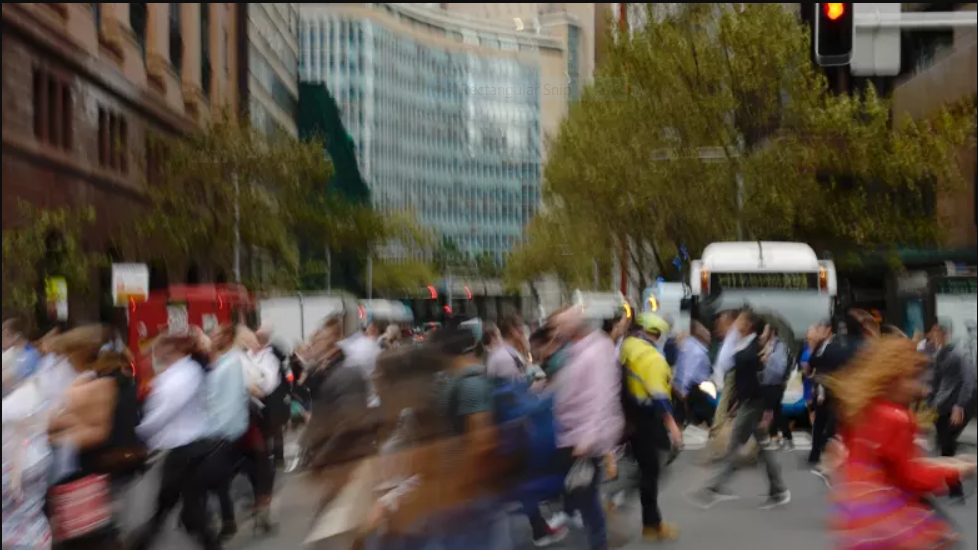6 April 2018 — 12:15am
In the former category, we’re arguably overstating annual net overseas migration (NOM) by about 20 per cent.
In the latter, there’s Dick Smith’s “Do any of us really want to live in a city of eight million people?” question. Self-evidently, eight million people would, just as five million want to live in Sydney now, 14 million want to live in London and 20 million want to live in New York.
Photo: Nick Moir
As the chorus blaming immigration for all society’s ills grows, numbers are selectively recruited to suit the cause, while a little perspective and the benefits we’ve gained from strong immigration are ignored.
A quick example is the constant repetition of the “record high immigration” phrase. Yes, in absolute numbers the annual 190,000 permanent visas plus humanitarian cases is the highest we’ve done, as was the 250,100 NOM for the year to the end of September, but in percentage terms – a better guide to the perceived impact of migration on the ground – we’re nowhere near it.
Our 250,100 NOM (the extras on top of permanent and humanitarian visas mainly being international students on temporary visas followed by 457 temporary workers) was for a country of 24.7 million – 1 per cent. In 1950, a little Australia of 8.2 million had NOM of 153,685 – 1.9 per cent. That 1950 NOM would have included precious few temporary migrants. The rate of permanent migration was double what it is now.
More recently, to consider the total population growth that so concerns critics, Australia’s resident population increase averaged 1.6 per cent per annum over the five years to 2016, higher than the 1.4 per cent we averaged over the 20 years to 2016, but lower than the 1.8 per cent over the preceding five years. We managed 1.6 per cent again last year – so on an 11-year view, our population growth rate has slowed.
What’s more, it’s arguable that NOM is overstated by about 20 per cent.
A migrant getting off the plane here adds one to our NOM total. If he or she eventually decides to get back on a plane, perhaps deciding to retire to a Greek island, it’s a subtraction from NOM. But if that migrant “leaves” Australia by dying here, the Australian Bureau of Statistics counts the death as a subtraction from our “natural” population increase.
In 2016, the most recent period with detailed information on deaths, 50,664 foreign-born people died in Australia. Only 339 of them were normally resident overseas, so an extra 50,325 migrants left Australia than are counted in NOM. Delete migrants leaving in pine boxes from the “natural” figure and include them in NOM, hey presto, NOM and natural are roughly level pegging, instead of the 63 per cent to 37 per cent split that contributes an exaggerated optic to the anti-migration picture.
Facts versus perceptions
That’s a big picture argument about perceptions. There’s much more to debate about in various migration details.
For example, Bob Birrell, a constant critic of our immigration program through his Australian Population Research Institute, has had another crack at the skilled migration program which accounts for 130,000 of our annual 190,000 non-humanitarian permanent visas. Birrell claims the program is not needed, employers would barely notice if it was scrapped, that it includes skills that are not in short supply and that most non-English-speaking professionals end up not working as professionals.
There are problems with the list of skills in the program, but his core attack using census data on non-English-speaking professionals has been sunk by a former Immigration Department deputy secretary, Abul Rizvi.
“As Birrell would know better than anyone, high-level census data is a poor tool for making conclusions regarding the effectiveness of skilled migration visa categories,” writes Rizvi. “Migrants who put ‘skilled’ in response to a census question may have entered Australia under a range circumstances, including via the humanitarian program, the family stream; or as secondary applicants in the skill stream (eg the spouse of a primary skilled migrant)…
“It is surprising Birrell makes no reference in his report to the Continuous Survey of Australia’s Migrants (CSAM), which does survey primary migrants in the skill stream. The 2015 CSAM Reportsays ‘at the six-month stage of settlement, almost nine in ten skilled migrants (ie primary migrants in the skill stream) were employed. More than three quarters were working in full-time jobs and more than six in ten were in highly skilled employment. On the basis of these measures, skilled migrants significantly outperformed Australia’s general population. Skilled migrants also had higher earnings on average than the Australian population, but unemployment was slightly worse than the national average.’ It should be noted these are outcomes only six months after arrival.”
The Indian-engineer-turned-taxi-driver mythSuch is the growing popularity of knocking migration though, Birrell’s contribution to perpetuating the Indian-engineer-taxi-driver image gets noticed and Rizvi’s demolition doesn’t.
And that’s only one example. Australian National University demographer Dr Liz Allen has taken aim at Tony Walker’s endorsement on these pages of Tony Abbott’s call to nearly halve our migration program, tweeting that public disquiet about population pressures was being fuelled by such articles that were “false on facts, blaming population rather than politicians” for infrastructure problems.
FOR FULL STORY PLEASE CLIKC THE LINK BELOW;
www.smh.com.au/business/the-economy/populist-drum-beats-wrong-numbers-drive-our-migration-debate-20180404-p4z7qk.html


 RSS Feed
RSS Feed